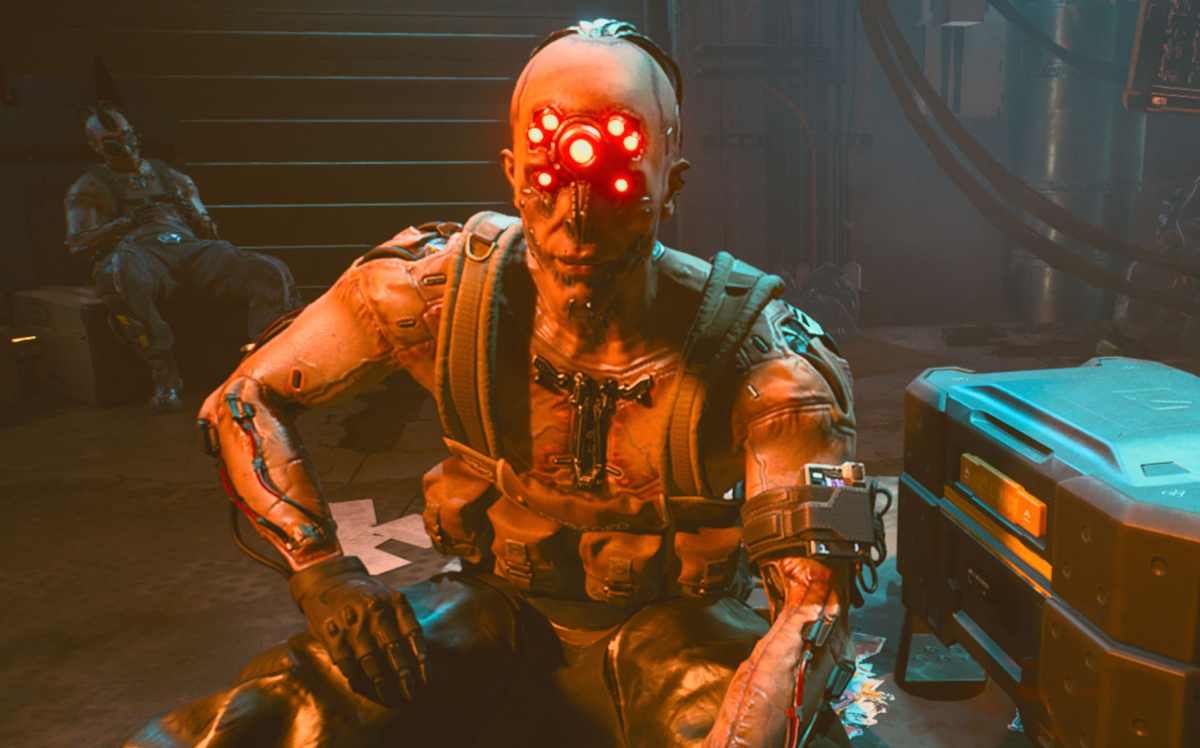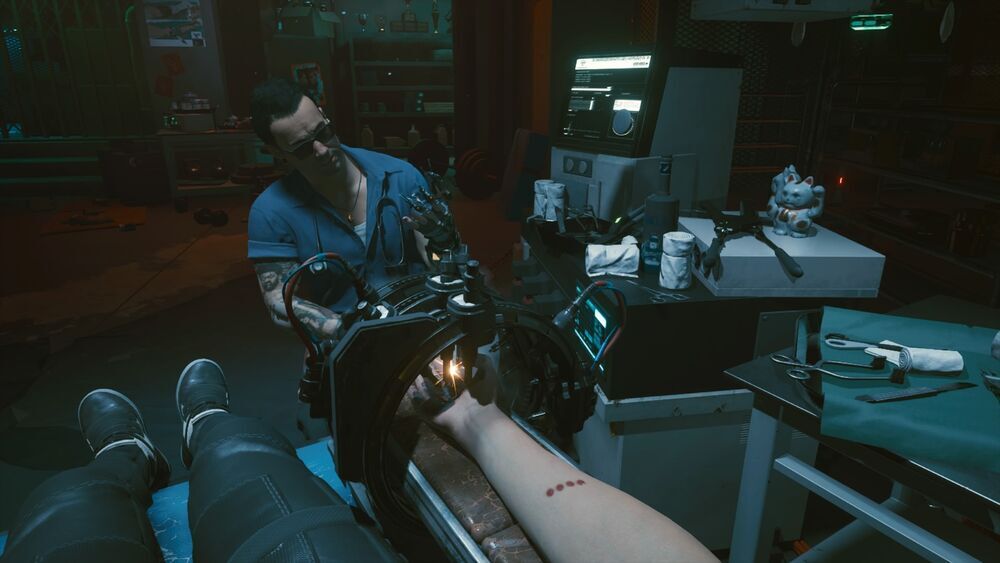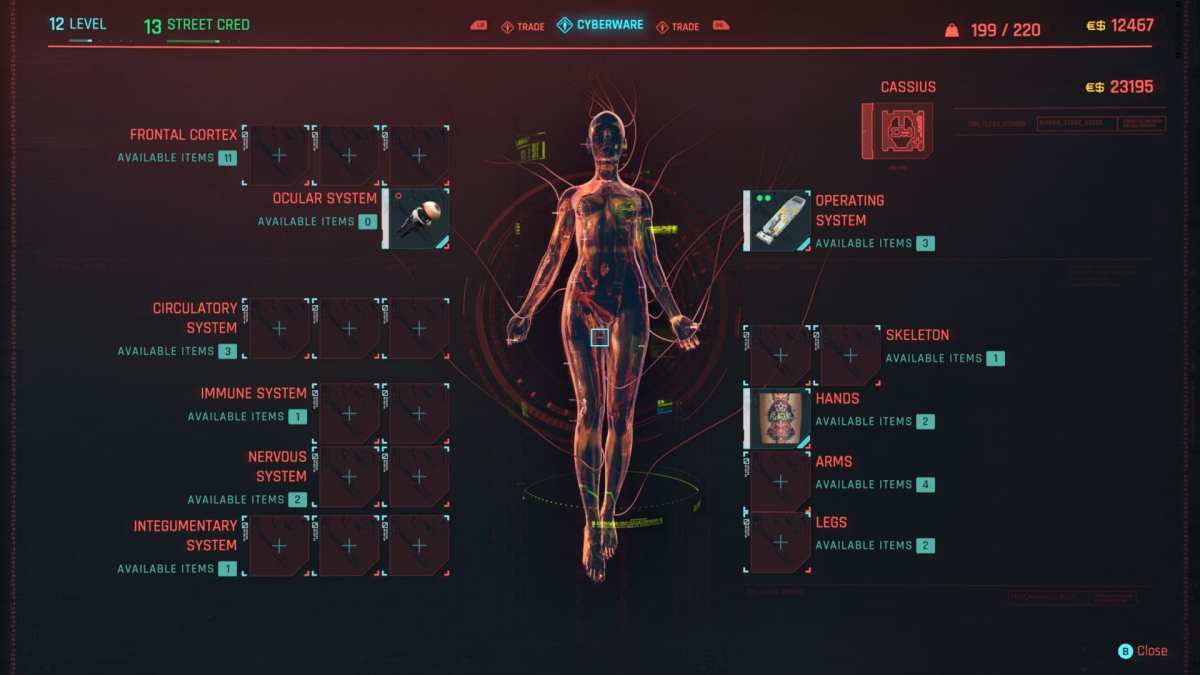If at first you don’t succeed, graft your torso onto a massive set of robotic spider legs. That’s the valuable life lesson Star Wars: The Clone Wars taught me, and the closer Cyberpunk 2077 came to release, the more I looked forward to indulging in some pretty radical cyber surgery.
After all, the tabletop RPG Cyberpunk 2077 is based on, as well as the genre it draws from, deals heavily in transhumanism. Prosthetics, far from being limited to those who have lost limbs, are used to enhance the human body. Leaf through the Cyberpunk 2020 sourcebook and you’ll see characters who’ve replaced huge chunks of their vulnerable flesh with mechanical substitutes.
Even if CD Projekt Red’s heavily anticipated action RPG didn’t directly let me follow in the Sith Lord’s clanking footsteps, I reasoned I’d still be able to take things to the extreme. The Maelstrom gang, featured heavily in Cyberpunk 2077’s trailers, weren’t an object of terror to me. Instead, with their mechanical feet and oversized glowing red “eyes,” they were something to aspire to.

But it wasn’t just that I wanted to be able to boot my foes into orbit; I was equally eager to discover how Cyberpunk 2077 would push back against my farewell to the flesh. One of the highlights of Vampire: The Masquerade – Bloodlines was choosing to play as a Nosferatu, balancing the bonuses that gave you with the way you had to stick to the shadows. So I wondered, would Cyberpunk 2077’s populace shun me the more extreme my modifications became?
At the very least, I expected to have to deal with cyberpsychosis. The Cyberpunk 2020 sourcebook sports a whole section about the potential mind-warping consequences of over-modification. The more drastic the alterations, the more likely you’ll enter a rage-induced state, becoming a danger to yourself and others. It also details how, even if you’re taking a less dramatic approach to “upgrading” your body, implants can still erode your humanity.
Cyberpunk 2077 does get off to a promising start; as protagonist V, you sit in ripperdoc Viktor Vektor’s clinic, arm motionless as a bulky piece of apparatus conducts laser surgery on it. Minutes later, you watch uncomfortably as, with a distressing crunch, he pushes a new eyeball into your socket. You’re treated to a suitably futuristic view of V’s physiology, depicting the many, many slots that can be occupied by implants.

Unfortunately, the more time you spend with the game, the clearer it becomes that Cyberpunk 2077 serves up transhumanism lite. You don’t get to be Evil Sam Fisher or Spider-Legs Darth Maul because Cyberpunk 2077 has chosen to play it safe. It offers a very binary view of body enhancement: It’s the bad guys who have the big guns, who strut around looking like they’ve raided RoboCop’s wardrobe. A “hero” needs to fit into a onesie.
I’ll concede that there’s a risk of becoming so powerful you unbalance the game, but cyberpsychosis would be the perfect counter to this. How far are you willing to go, knowing you could end up fighting to control your character? Instead, cyberpsychosis is something that happens to other people, just another sidequest to rake in a few extra credits. It’s hardly a cautionary tale if there’s no chance of finding yourself in their shoes.
In fact, there’s a low ceiling on how different you can make V look, even when you give them Gorilla Arms or Mantis Blades. There are no real consequences to utilizing every internal upgrade slot either.
Granted, transhumanism isn’t exclusively about upgrading the physical; Cyberpunk 2077 does dip into the notion of preserving consciousness, but it’s smothered by the apparent need to put Keanu Reeves front and center. Frictional Games’ Soma tackles the subject in a far more thought-provoking manner.

For all its flaws, Cyberpunk 2077 can still be a lot of fun. However, there’s evidence it was going to dive deeper into transhumanism and the pitfalls of “upgrading” the human form. But like several planned features, it was ultimately dropped.
“The individual part is important to us too — how human you still are when you change your body,” stated Philipp Weber, Cyberpunk 2077’s lead quest designer, in an interview with Eurogamer.
A trailer, released at roughly the same time, backed up this statement, showing that cybernetic implants had a humanity cost attached. So you would have had to consider how much you were willing to sacrifice to get an edge on your foes.
Cyberpunk 2077’s final incarnation not only ditches that mechanic, but it makes installing implants as painless and unremarkable as changing your socks. And while I can forgive it for depriving me of mecha legs, seeing it skip out on one of cyberpunk’s more searching topics is genuinely disappointing. If Cyberpunk 2078 ever sees the light of day, I hope CD Projekt Red steps up and milks the source material till its robotic teats bleed.
